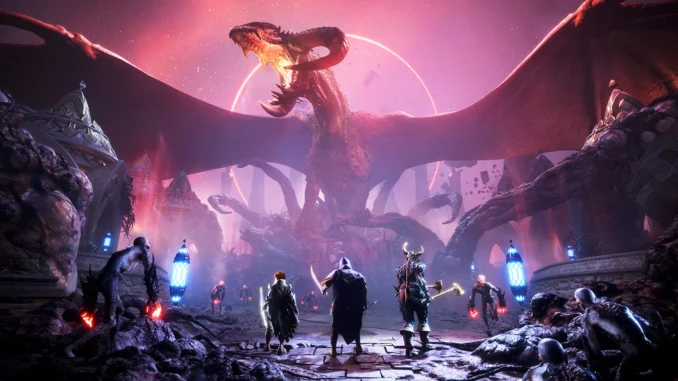
Dragon Age: The Veilguard the preview of BioWare’s strange return
We previewed the first hour of gameplay of Dragon Age: The Veilguard, an experience rather distant from the legacy of the saga.
Dragon Age is such a kaleidoscopic saga that dozens of different hooks could be used to introduce its big return. It would be possible to remember the ancient dark fantasy soul at the basis of Origins, an old inspiration capable of coloring the character of the characters through a gray scale which at the time represented absolute excellence. We could instead mention the second chapter, a title suspended halfway between small flashes of genius, above all the division into progressive acts, and the numerous limits brought about by the arrival of the new property, such as for example the setting restricted to the bubble surrounding the city of Kirkwall. Or we could still put the spotlight on Inquisition, a project that despite the cloud of criticism that still tries to grab it today, managed to grab an award for Game of the Year, one of the most discussed since the foundation of The Game Awards.
That said, the most appropriate angle to deal with the series probably lies in the history of BioWare : after years spent at the top of the industry, what had established itself as the greatest powerhouse of role-playing games on the planet went through a series of vicissitudes that saw her sink into an identity crisis, blurring the contours to the point of reducing her productions to the level of faded memories. It is precisely for this reason that the next instance of Dragon Age is considered so important: for more than a decade now, fans have been hoping to see that weakened light burn again like an indomitable fire, dragging the saga and the company back into the dimensions that belong to him. We’ve seen the first hour of gameplay of Dragon Age: The Veilguard , and we feel like saying that, for the moment, that day still seems quite far away.
A pinch of the past
We were welcomed into the home of BioWare’s Play Days by Corinne Busche, the game director of Dragon Age: The Veilguard who immediately wanted to list and explain in detail the three fundamental pillars around which the fourth episode of the saga was shaped : “Be whoever you want to be”, “Save the world”, but above all: “Save it together with your companions”.
Dragon Age: The Veilguard the preview of BioWare’s strange return
Dragon Age: The Veilguard – Xbox Games Showcase Trailer
A series of fixed points, this, which in some ways also explains the change that occurred in the parts of the title, originally imagined as “Dread Wolf” – a clear reference to the construction of the plot that developed for years around the character of Solas – and now transformed into The Veilguard, a further manifestation of the desire to put the fully customizable protagonist and the companions who will support him along the way at the center of the stage.
Precisely the creation of the character marked the incipit of the presentation, which overall faced us with a new game and the entirety of the introductory mission, a sort of long prologue aimed at explaining the fundamental mechanics. The new editor allows you to shape the protagonist down to the smallest detail , starting from the choice of race and then moving on to a very rich selection of sliders designed to meet any player’s needs, complete with previews capable of showing the changes in the light of different types of lighting. What deserves even more attention is the importance of the backstory: as in a sort of revival of the ancient system of origins, it is possible to detail the protagonist’s past to the point of also indicating a faction with which he is or was associated in the past – an example randomly it is that of the Gray Wardens – influencing the outcome of certain situations you may encounter while exploring Thedas.
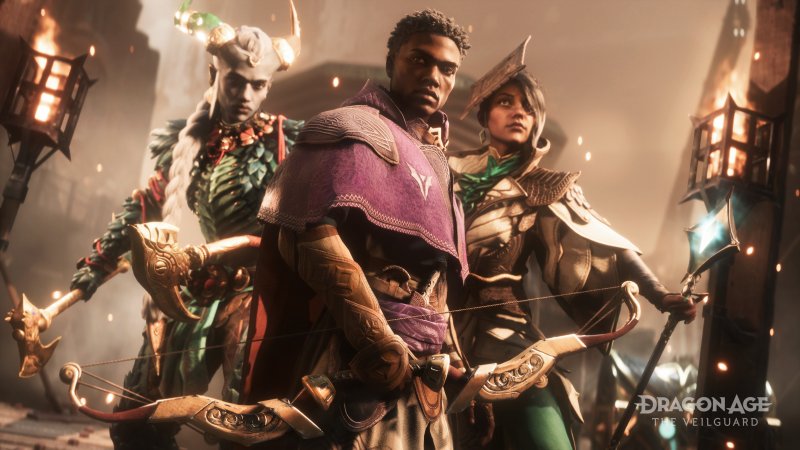
Equally impactful is the choice of the initial class between the inevitable Warrior, Mage and Thief, each of which then develops through a triad of further specializations: since the developers have opted for the Thief, we discovered that he has the possibility of specializing such as Duelist, Saboteur and Veil Ranger, archetypes each equipped with a dedicated skill tree. There isn’t much else to add at this juncture: once the game style, i.e. the difficulty level, has been set, all that remains is to assign a name and surname to the protagonist to throw himself into the Dragon Age universe, discovering an experience similar and at the same time profoundly different to the legacy of the saga.
The plot and the characters
The story takes off in a bar on the outskirts of Minrathous, capital of the Tevinter Empire and a city governed by the Magocracy, therefore one of the most magical places that can be found in Thedas, imagined by BioWare artists as a strange cyberpunk city in where spells are used to generate neon signs and light beams alongside brutalist architecture. Here the protagonist, accompanied by a Varric Tethras veteran of the second chapter, finds himself on the trail of Neve Gallus, a private investigator who apparently constitutes a fundamental piece in tracking down Solas.
Dragon Age: The Veilguard the preview of BioWare’s strange return
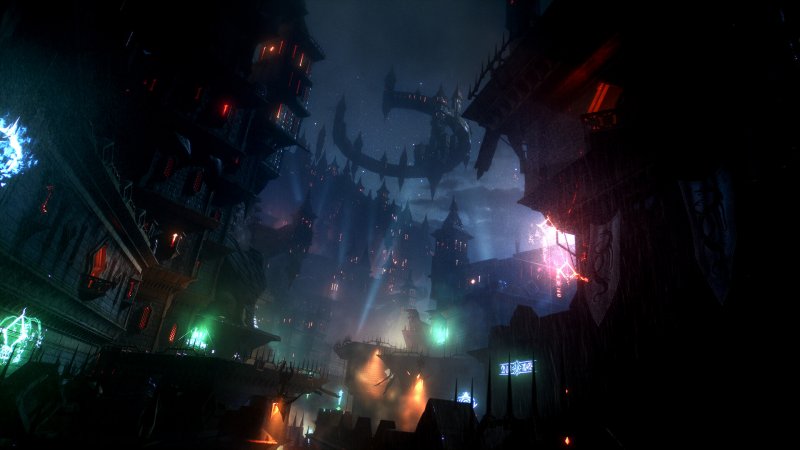
Despite the change in the title, this fourth chapter of Dragon Age continues to orbit around the story of the Dread Wolf: it is inevitable here to make what amounts to a heavy spoiler regarding the last chapter, because a historic companion of the Inquisition has finally revealed himself an elven deity willing to repair his past mistakes, even if this involves the destruction of the Veil – a force that separates the material world from that of the spirits – and consequently the bringing down of a terrible calamity on the world.
While Solas has begun to perform his ritual, opening dimensional chasms that begin to release demons into the skies of Minrathous, we also witness the return of Lace Harding, this time in the form of a companion with whom it will also be possible to form a love relationship. What matters most is that the group finally reunited will also be reunited with Neve Gallus, a sorceress with an almost steampunk appearance who will set the wheels of the prologue in motion.
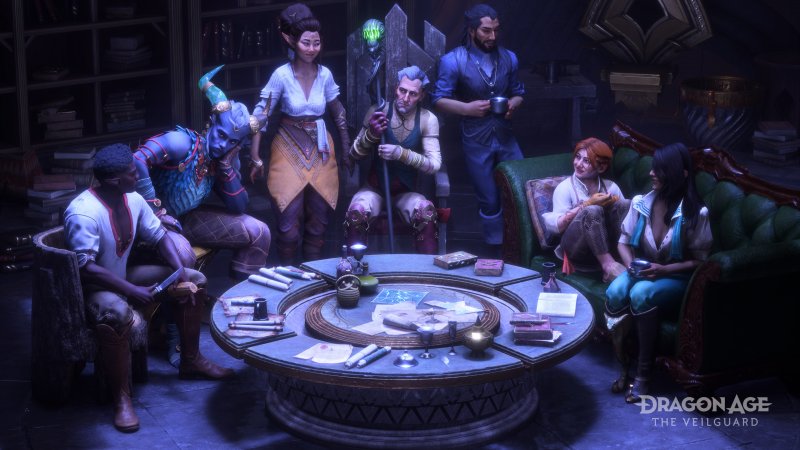
The opening of Dragon Age: The Veilguard is more reminiscent of an epilogue than anything else , because the group of heroes will have to fight their way through demons and Tevinterians until they find Solas’ hideout, running through alleys, destroying obstacles, using ziplines and making leaps of in front of the illuminated signs of the Minrathous shops: the final objective is an Eluvian hidden in the city catacombs that leads to the site of the fateful clash, in which we won’t tell you what happens because it’s a good blow to digest for any fan of the series. The only problem is that, if it weren’t for the presence of Varric and Harding, as well as the multiple choice dialogue system, it would be very difficult to perceive the typical atmosphere of the Dragon Age saga.
Pure action twist
Despite the already particular glance offered by Minrathous’ rendering, the first element that catches the eye in Dragon Age: The Veilguard is the apparent abandonment of most of the role-playing ambitions in favor of a clear marriage with a action combat system : the camera has moved even closer behind the protagonist, at the moment there is no trace of tactical views, the interface appears drier than ever.
Dragon Age: The Veilguard the preview of BioWare’s strange return
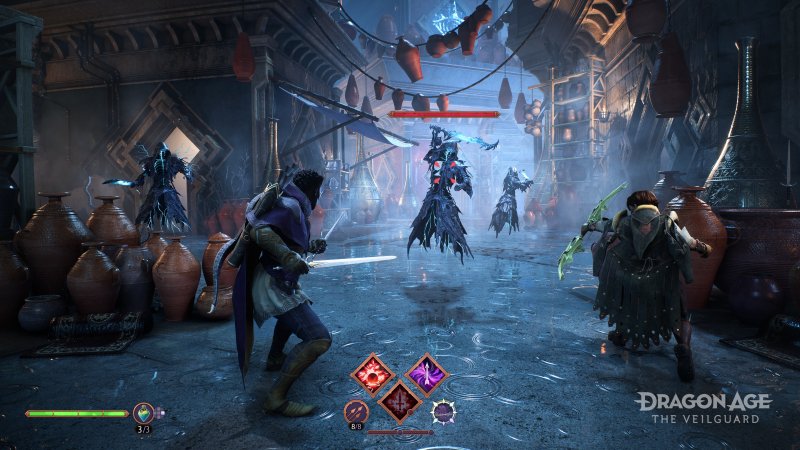
The battles are fast, frenetic, involve the exploitation of light and heavy attacks – obviously in combination with evergreen dodges and parries – which culminate in the use of active skills. Skills like the Rogue’s Static Strikes are accessible both by means of a timid tactical pause that opens the new Skill Wheel, and through a more immediate system of shortcuts that allows you to fit them without too many thoughts between one swing and the next, which remains also valid for the skills of companions, to whom – at least for now – it seems it is possible to give instructions only in this way.
The Minrathous map looks like a large linear dungeon in which you come across small hordes of enemies to quickly defeat , some of which are characterized by particular mechanics: those equipped with a barrier, for example, can only be made vulnerable following the use of ranged attacks which are present in the basic equipment of all classes, while certain interactions between different status alterations can generate devastating consequences. Director Busche also confirmed that the characters are equipped with a sort of Ultimate ability, Runes that alter the functioning of the skills and – as regards the companions – also the much requested healing abilities that can be used in addition to potions.
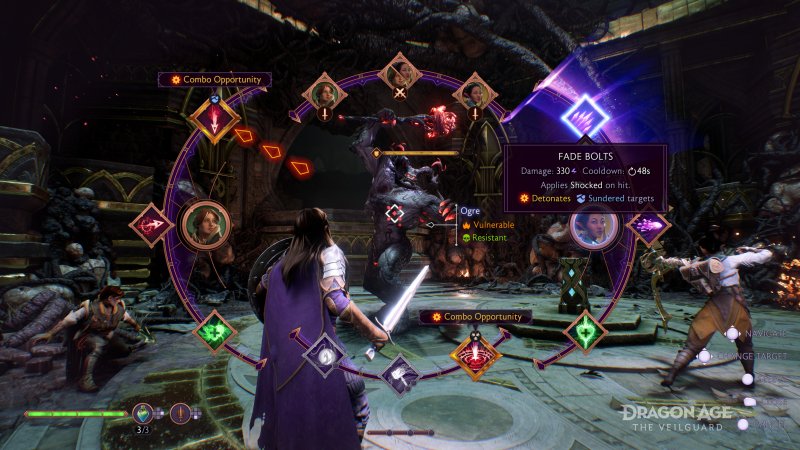
Ultimately, what has been shown seems to mark the culmination of the slow process of detachment from that tactical component which has become increasingly marginal over time : the first boss is a large armored demon who has emerged from a dimensional rift which launches telegraphed attacks on the ground and fundamentally needs to be annihilated in the shortest possible time, opening up the specter of an experience to be faced mainly with the brain turned off. That said, it must be remembered that the section shown by Busche is only representative of the first beats of the experience: although it is still too early to go unbalanced in one direction or the other, the feeling is that the approach to the clashes may have contributed to making the general atmosphere of The Veilguard is full of contrasts and contradictions.
Strong contrasts between opposing souls
Because it is precisely the general atmosphere that clouds the waters around Dragon Age: The Veilguard: the story trailer, for example, is closer to the humor typical of productions like Borderlands than to the seriousness required by a heartbreaking story like that of Dread Wolf. A very similar discussion could be made regarding the aesthetic interpretation of Minrathous and Tevinter, since the city appears more cyberpunk than fantasy, eschewing black and gold before staging architecture, shapes, and games between neon lights very distant from the artistic inspiration that made BioWare’s fortune .
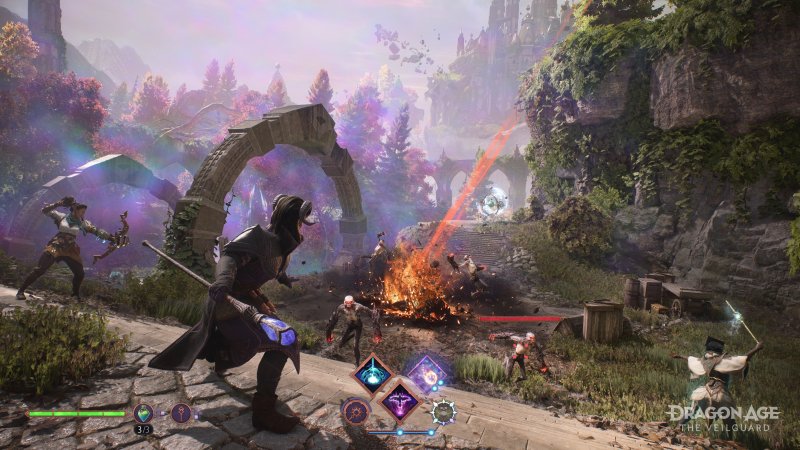
The developers have described an encouraging and convincing production: the timeless multiple choices in the dialogues return, the work promises to stage the largest and deepest version of Thedas ever made, there are a couple of moments – especially following the crossing of the Eluvian – which reflect the promises regarding character characterization . We talk about a tactical combat system, a great development of the protagonist, the fundamental ingredients that drove the series to success. However, at the same time, there are several elements that seem to strongly clash with all these declarations of intent.
The color palette adopted, the promotional images, the user interface, the design of the creatures that you will face, as well as a good part of the combat mechanics, convey the sensation that, until some time ago, this The Veilguard should have appeared as a project profoundly different from the classic chapter of the Dragon Age saga, only to then suddenly change direction.
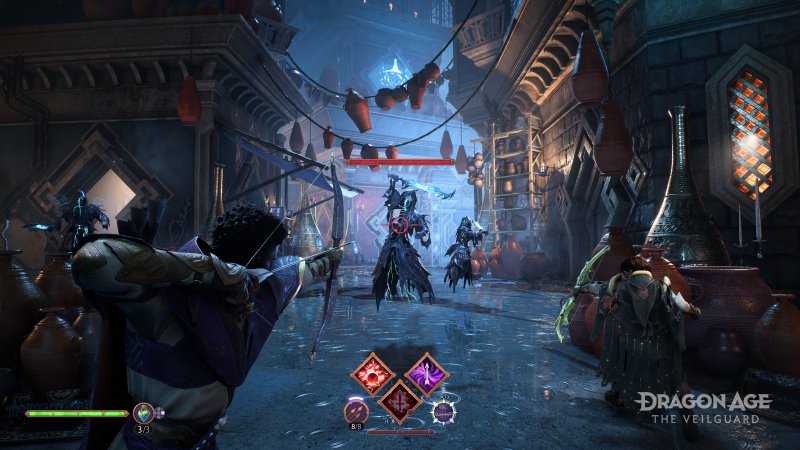
If this were not the case, if we were sensationally wrong, it would be in some ways worrying, because it would mean that BioWare has developed an idea of the tone and legacy of Dragon Age that is very distant from the reality of past chapters. Between ups and downs, the next chapter of the series has become even more important than it already was , because that of the entire studio could be linked to its fate, and everything will depend on the reception by the public.